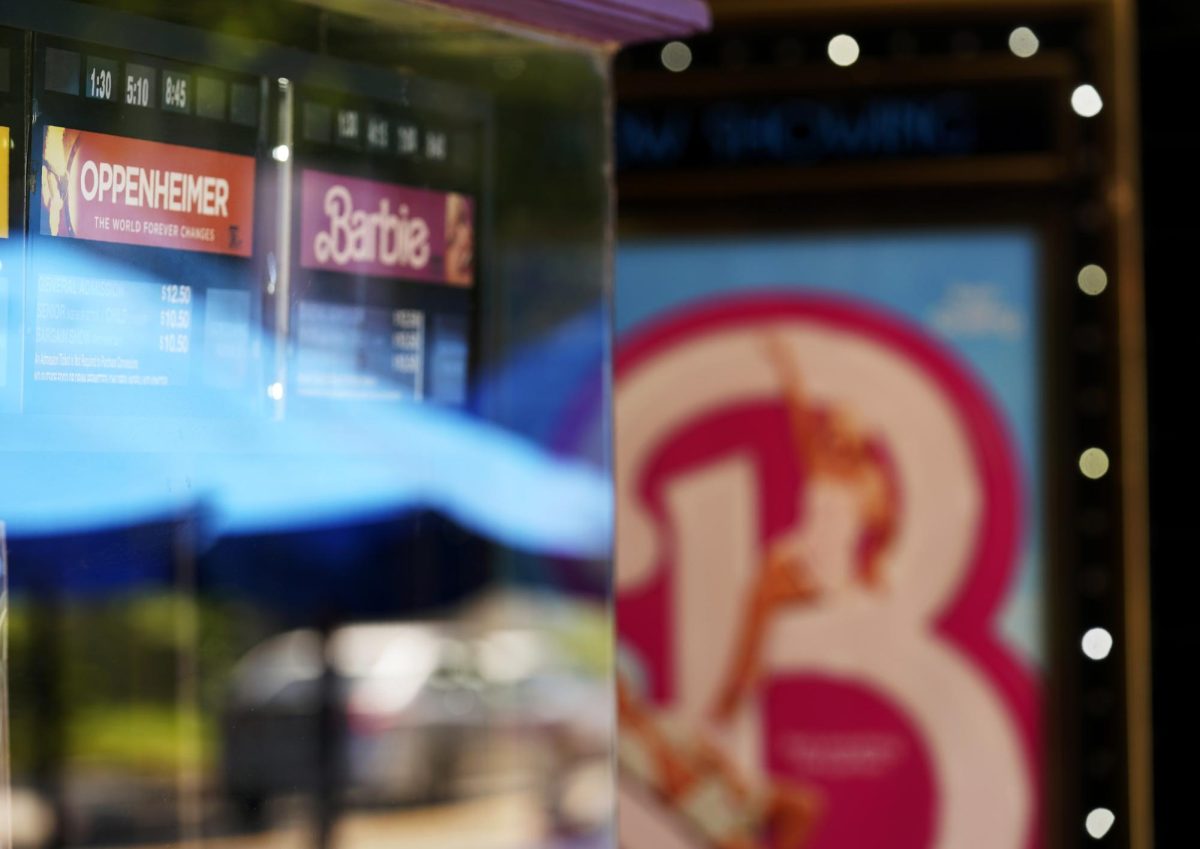Ever since the pandemic, cinema has been interrupted.
With the normalization of at-home movie premieres via streaming services like Netflix and Max, people got used to streaming at home rather than going to the movies to have that cinema experience.
Many Americans, mainly me, had missed the experience of paying $20 for popcorn and a medium soda. Still, this summer, I got a glimpse into what cinema looks like in a modern context.
This summer saw the mammoth Hollywood release of “Barbie.”
“Barbie,” directed by Greta Gerwig, had captured the popular imagination in a way that cinema hasn’t since pre-pandemic. The meme-ification of “Barbie” had taken the internet by storm over the summer.
So, naturally, I was excited to watch this film in theaters. I was met with beautiful, candy-coated set designs and costumes that would make Lisa Frank jealous.
Simultaneously, I was met with an utterly vapid script that reminded me of my belief that media literacy does not exist in mainstream cinema.
Watching this movie made me believe I was suffering from an atrophy. The dialogue in the film was so clearly pandering to the online activists that are promptly going to repost the quotes on their Instagram story to align themselves with what they think is the paragon of modern feminism.
A member of the audience shouted, “Period!” after what was supposed to be an emotional monologue. That is the target audience for this film.
I wanted to love this film. I love Gerwig’s previous work. “Lady Bird,” Gerwig’s best picture nominated film, hosts a unique and singular voice that the modern generation can relate to. Gerwig knows how to write real emotion, and she can portray human feeling in an eerily realistic way, so that is the expectation I had held going into this film.
Disappointingly, we only see this emotion after a grueling 100 minutes.
The 100 minutes that I had to sit through were filled with cringe-worthy dialogue that featured the same repeated liberal discussion that has been in the cultural lexicon for the past several decades, making the film redundant and predictable.
While I did not expect groundbreaking social commentary from “Barbie,” I did expect originality.
If the mediocre script was not enough reason for my dislike, the product placement fuels my distaste for the film.
Chanel, Duolingo, Chevy, Birkenstock, and Mattel all make shameless appearances throughout the film. This near-constant product placement litters the set and only reminded me of why it was made: money.
The lack of artistic merit in the film, alongside the redundant script, made me abstain from giving the movie the praise it has been receiving.
Although “Barbie” left a bad taste in my mouth, a few movies stood out, reminding me that mainstream theater corporations are still screening quality films meant to entertain.
“No Hard Feelings,” directed by Gene Stupnitsky, is a no-frills comedy movie starring the incomparable Jennifer Lawrence.
Lawrence delivered her all and gave a memorable performance as the 30-something licentious Uber driver Maddie Barker.
Lawrence and her co-star, Andrew Barth Feldman, had such memorable chemistry that kept the film entertaining and, most importantly, hilarious.
“Talk to Me,” directed by the Philippou brothers, is a mean, scary, gruesome horror movie that delivers shocks and gag-inducing violence while possessing a modern yet tasteful commentary on today’s culture.
Those two movies reminded me of the greatness of the movie theater. Whether it’s laughing with an audience or being scared with an audience, I love it either way.
Even though I’m not too fond of “Barbie,” I was thrilled with how full the seats were, and I had the opportunity to see it in a packed theater, something I haven’t experienced since “Endgame” (which I also dislike).
I missed that experience a lot. That may be why I saw “Barbie” three times.


